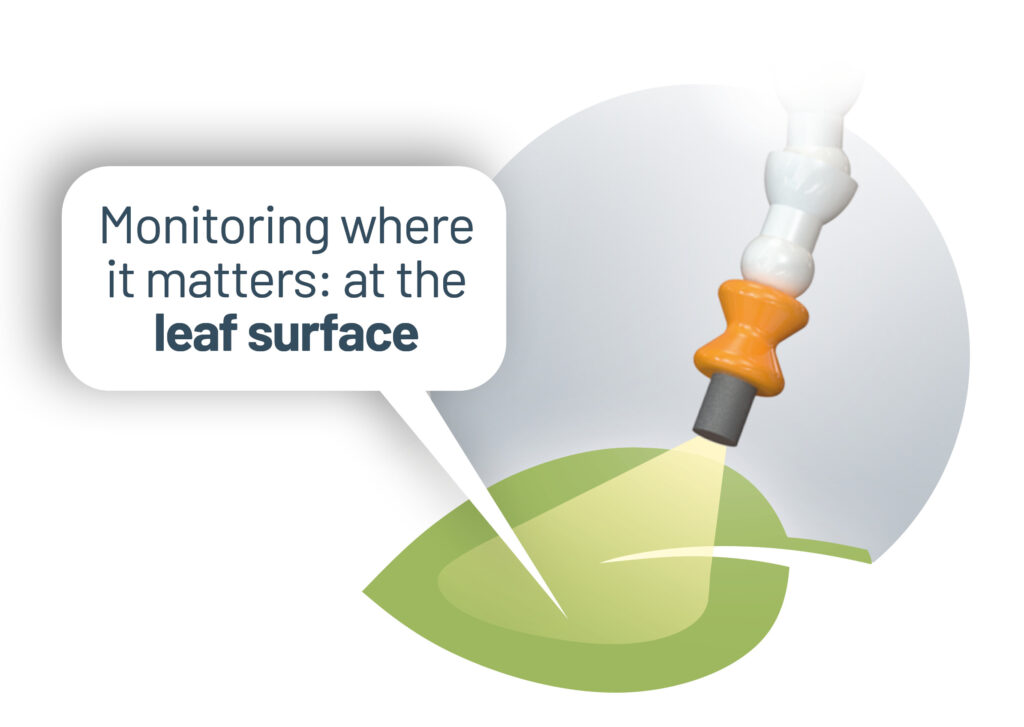Continuous Sensing, Dependable Results
There was a time when farmers planted and prayed. They tried to protect their plants from dangers they could see with the naked eye and hoped for the best for those out of sight and out of control. But all dangers are not that easy to perceive…
Are your plants screaming out of balance and you can’t hear them? Take the guesswork out of your growing decisions and switch over to Sigrow Sensors.
The Wait is Over with Real-Time Monitoring
With Pixel you can monitor progress in real-time, make data-driven decisions and get measurable results immediately rather than having to wait till the actual harvest time to see if your “green thumb” was on point – or not!
The Science at Work:
Pixel collects microclimate data by creating a 15° cone of sensing above a plant and measures different variables within that area.
It measures PAR (light useful for photosynthesis), and VPD Leaf at the leaf surface, along with other microclimate variables like plant and air temperature, dewpoint, RH (relative humidity), and AH (absolute humidity).
Wondering what the scientific variables mean?

Built with Sustainability and Precision in Mind
The Pixel is an eco-friendly, wireless sensor powered by solar panels and a durable lithium battery to reduce operational energy consumption and negative environmental impact. It’s force-ventilated so gives highly accurate readings for humidity and temperature.
There’s no ambiguity left about what is going on with your plants once you have a Sigrow Pixel setup monitoring and controlling the microclimate.
Stay Ahead of the Competition
Gone are the days when growers depended on intuition alone to make decisions. Modern growers and their clients both need dependable results and uniform yields. Take the cut-flower industry, for instance where uniform flower size and colour are very important. To achieve this, growers need to make informed decisions based on scientific proof which is possible only with sensors.
*
Discover more from scientific research:
- “A vapor pressure deficit effect on crop canopy photosynthesis” by W.T. Pettigrew
- “Plant responses to rising vapor pressure deficit” Grossiord et al
- “Steering of Fogging: Control of Humidity, Temperature or Transpiration?” C. Stanghellini and F. Kempkes, Wageningen UR Greenhouse Horticulture
- “Minimizing VPD Fluctuations Maintains Higher Stomatal Conductance and Photosynthesis, Resulting in Improvement of Plant Growth in Lettuce” Takayasu Inoue et al
